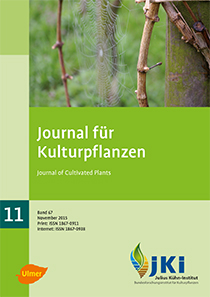Copper availability in specialty crops – Assessment of different extraction processes to predict the accumulation behaviour of earthworm conenoses at vineyard soils
Keywords:
Copper, vineyard soils, copper loads, exposure, bioavailability to soil organisms, pathway soil/soil organisms, earthworm conenoses, extraction processes of VDLUFA, bio concentration factor, voluntary risk assessmentAbstract
The copper availability is directly related to the impact on the soil conenoses, making it a ‘key element' in the risk-benefit assessments by the regulatory authorities.
The experience of the longtime studies on the load distribution in the soil in general and the studies on the behaviour, fate, exposure and effects on soil organisms in particular, that a realistic risk assessment of soil total copper contents is only possible on the basis of bio available fractions and not as previously on the basis of total contents.
With obtained soil samples from conducted field studies of earthworm conenoses at 16 selected wine farms bio concentration factors of earthworm tissue were calculated and linked with help of simple regression approaches of bio available copper values to test with which normalized soil extract (Cu Extract) the copper enrichment behaviour can best be predicted. With the extract with the closest correlation between content and copper accumulation in the tissues of the earthworm communities a model approach to enforcement relevant eco-toxicological evaluation should be developed for agricultural soil on the basis of the bio available fraction for risk assessment of the effects on soil organisms.
DOI: 10.5073/JfK.2015.11.01, https://doi.org/10.5073/JfK.2015.11.01
Downloads
Published
Issue
Section
License
The content of the journal is licensed under the Creative Commons Attribution 4.0 License. Any user is free to share and adapt (remix, transform, build upon) the content as long as the original publication is attributed (authors, title, year, journal, issue, pages).
The copyright of the published work remains with the authors. The authors grant the Journal of Cultivated Plants, the Julius Kühn-Institut and the OpenAgrar repository the non-exclusive right to distribute and exploit the work.







